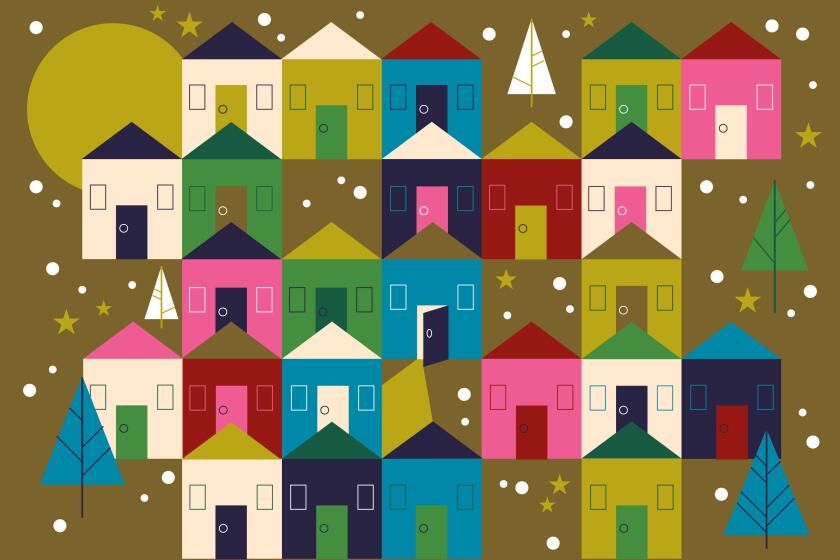On L.A.âs Clara Street, working-class dreams met an anti-minority mind-set in the 1920s.
A home of your own -- itâs an American dream. Good houses make stable lives, and stable lives make good citizens. Thomas Jefferson despaired at the nationâs ramshackle shanties, and for more than a century, presidents pushed for change. Technology and innovation -- supported by government, encouraged by educators and praised by preachers -- made the dream a reality. From the kitchen table of the American home came the soldiers who fought our wars and the families who healed their wounds.
By the 1880s, America was moving from farms to cities. Los Angelesâ Clara Street was like streets in New York, Boston, Cleveland and Chicago -- lined with clapboard houses, often designed from mail-order plans. Affordable and efficient, the average Joe-the-Plumber home had four to six rooms, a yard and a porch for community life.
The house at 742 Clara St. was just such a place. It was built near the Los Angeles River in 1895 for $200 by Nella Mead, wife of early developer William Mead. The Meads got rich and shared their wealth through a foundation that offered, as this paper reported, âhomes on easy payments and without profit, for wage earners, and people with small or moderate salaries.â That included August Peroni, an Italian immigrant butcher, and his wife, Olympia, who raised their family at 742.
In the 1920s, America boomed and L.A. swelled with the urban poor as white residents fled to greener, suburban pastures. The Peronis moved out to Edendale, now Silver Lake, and Mexican-born contractor Ramon Calderon picked up the house and others on the street. It was his turn to prosper in the city, and Calderon was improving his investment when things turned bad. On Oct. 2, 1924, pneumonic plague broke out.
The cityâs response was fierce. Officials quarantined neighborhoods where a total of about 1,800 to 2,500 people lived. Even where there were no signs of plague (but plenty of signs of ethnicity), streets were blocked. Police and health department guards stood ready on what the city called âa military basis.â Inspectors executed stray dogs and cats, tore off the siding of homes to fumigate foundations, buried garbage and burned bedding. As dead rats piled up at the cityâs lab, the âratatorium,â more residents got sick. The plague was contained in November but by yearâs end, nearly 40 were dead.
The house at 742 Clara St. was tagged ground zero of the infestation. Calderonâs boarders -- Luciana and Guadalupe Samarano, three of their four sons and brothers Mike and Jose Jimenez -- died. Not all plague victims were Mexicans, but they were implicated in the spread of the disease. Mexicans had what business leader William Macy labeled their âpeonâs way of living.â Many lost their homes and their jobs.
As Western historian William Deverell puts it, a rundown neighborhood with rats and disease wasnât what the âcity of tomorrowâ had in mind. It used the scourge of the plague to perform stealth urban renewal. Crews took out L.S. Camachoâs house on San Pablo Court and torched what an official report labeled a âNegro shackâ on East 7th Street. When all was done, about 2,500 buildings were gone. The city had declared them nuisances to dodge having to compensate their owners. Officials spun the story for commercial good; the City of Angels could now guarantee a âratless port.â
Calderonâs house survived in the devastated neighborhood. It was empty for years. Los Angeles grew. Bunker Hill came down and went up again. Clara Street became Vignes Street, and 742, owned by the city, was scrapped.
Watters is author of âLos Angeles Houses, 1885-1935.â
His columns are archived at latimes.com/lostla.
More to Read
Sign up for The Wild
Weâll help you find the best places to hike, bike and run, as well as the perfect silent spots for meditation and yoga.
You may occasionally receive promotional content from the Los Angeles Times.










